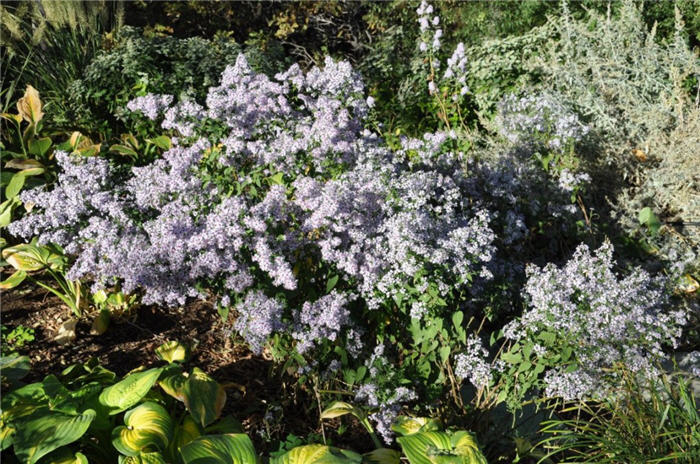| Botanical Name: Aster dumosus | |
| Common Name: Bushy Aster |

-
Anatomy
-
Culture
-
Design
Plant Type
Perennial
Height Range
1-3'
Flower Color
Blue
Flower Season
Fall
Leaf Color
Green
Bark Color
n/a
Fruit Color
n/a
Fruit Season
n/a
Sun
Full, Half
Water
Low, Medium
Growth Rate
Moderate
Soil Type
Sandy, Clay, Loam, Rocky, Unparticular
Soil Condition
Average, Rich, Poor, Well-drained, Dry
Soil pH
Neutral
Adverse Factors
Invasive
Design Styles
English Cottage, Meadow, Ranch, Woodland
Accenting Features
Showy Flowers
Seasonal Interest
Fall
Location Uses
Background, Entry, Walls / Fences
Special Uses
Cut Flowers, Mass Planting, Naturalizing
Attracts Wildlife
Butterflies
Information by: Stephanie Duer
Photographer:
Photographer:
-
Description
-
Notes
Bushy aster is a rather course, open aster growing between 2 to 3 feet high and wide, with an upright to floppy habit. It has small soft violet-blue to white flowers with yellow eyes, that blooms August until October. Given all the fancy hybrid asters, it might seem this one is a little out of place, but it is rugged and tough, and quite well suited to a more naturally-styled landscape or woodland setting. It will spread with the very slightest of encouragement.
Grow in average, medium to dry, well-drained soils in full sun to part shade. Pinching back stems in late spring will lower overall plant height, but will also delay bloom onset and increase branches, increasing the number of blooms. A light winter mulch will help protect crowns. Cut stems to the ground in early spring before new growth appears. Wet soils in winter can be fatal.